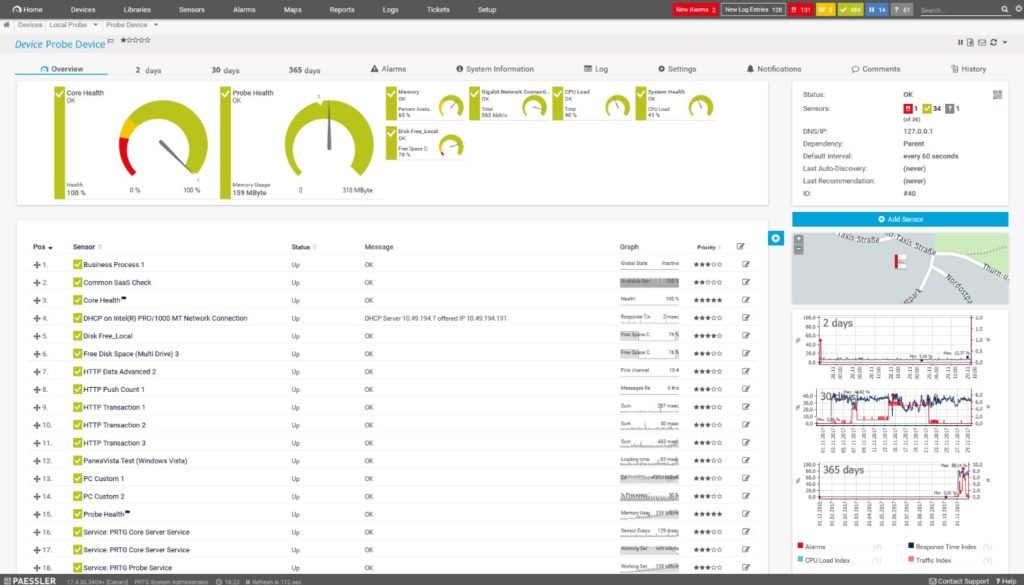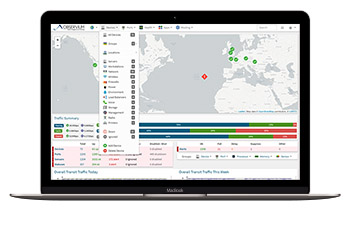

- #Open source bandwidth monitoring tool linux how to#
- #Open source bandwidth monitoring tool linux install#
- #Open source bandwidth monitoring tool linux free#
This program can restart the failed services, and the app can send an alert email including the fault details so that urgent action may be taken. It also monitors services like Apache, MySQL, Mail, FTP, Nginx, SSH, and so on.
#Open source bandwidth monitoring tool linux free#
Monit is a free open-source utility for proactively monitoring and managing system processes, applications, files, directories, and filesystems. To display the memory map of process ID, use the following command. You need to add PID along with pmap command to display the memory map of the given process. The pmap command is used to display the memory map of a process. pmap - Display the memory map of a process To display all information about CPU that mpstat can display, type $ mpstat -A 15. It shows reports for each available processor, starting with processor 0. Mpstat command is used to display processor-related statistics.

mpstat - Display processor related statistics To display the network counter using sar, use the following command. To display the swap status, use the '-S- command along with sar command. Similarly, to display CPU average load, use the '-q' option with sar command. To display I/O device status, use the '-d' option along with sar command. Use -A option along with sar command to display detailed information about the I/O Devices, CPU, Memory, and Network statistics. On CentOS/RHEL/Fedora/Rocky Linux and AlmaLinux

#Open source bandwidth monitoring tool linux install#
You can install the package using the following command. The SAR package is not found by default in the Linux system, but you can install the Sysstat package as SAR is part of sysstat. Aside from real-time system monitoring, SAR may also gather performance data in the background on an ongoing basis and analyze it to look for bottlenecking issues. You can dig down into menus, make changes to settings, and use ipTraf to run all kinds of great diagnostics on your interfaces and network capabilities.System Activity Report (SAR) is a real-time system monitoring tool. You can choose options by using the letter key associated to the menu item. You'll be presented with a very bright list of options on the terminal screen. To install ipTraf, we actually want to install ipTraf-ng, and do that with the command:
#Open source bandwidth monitoring tool linux how to#
You can see how to do this in my video linked at the top of the post. The interface colors (IMO) lack something to be desired, but this can be turned off for a more legible look. IpTraf is likely one of the most powerful and capable tools we have looked at thus far. Speedometer -l -r -t -m $(( 1024 * 1024 * 3 / 2 ))Ĭheck out the link at the top of the page to see what else Speedometer can do. I'll give you a starter command here, but make sure to check out the man pages to get the most out of this tool. It shows a wave form of usage for both upload and download, and really isn't too hard to use, but there are some flags and arguments you'll need on the command line. This tool provides a nice graphical looking view right in the terminal for your current bandwidth usage on any interface.

Use the 'Q' keyboard press to quit the application and return to the normal prompt. The screen will fill and give you a list of which interfaces are using bandwidth, as well as which applications. You'll want to run it with sudo so that it can access the network interface and application information. This is probably one of the easiest tools to run. NOTE: You may or may not need the development tools, but if you really want to run and use open source, self hosted software, it's never a bad idea to have those installed anyway. Yum based distros yum install gcc-c++ libpcap-devel.x86_64 libpcap.x86_64 "ncurses*" Ubuntu / Debian based distros (you may need sudo) apt-get install build-essential libncurses5-dev libpcap-dev Nethogs is an excellent little CLI tool that will show you which applications and pages are using your bandwidth, and more specifically, which ones are using the most bandwidth (or hogging it). I have to agree, as these are some really great tools. Some of these I stumbled across as I was looking for tools that can monitor an entire network's usage (video coming later), and a few were mentioned in the comments of my previous video as solid tools. Today, I wanted to cover a few more tools that provide some incredible information about your bandwidth usage, network interfaces, and more. I'll linke that video near the end of the article. If you haven't checked it out, I highly recommend it, as these are some top notch tools for determining how much bandwidth you are using, what applications are using the bandwidth, and tracking down potential issues. I recently did a video on some really great tools for monitoring your machine's bandwidth usage on Linux / Unix.


 0 kommentar(er)
0 kommentar(er)
